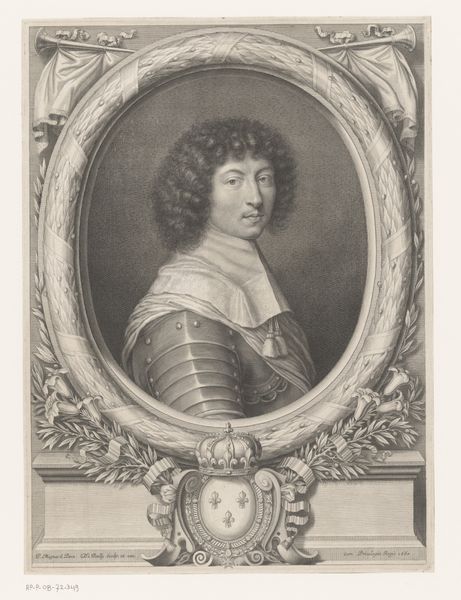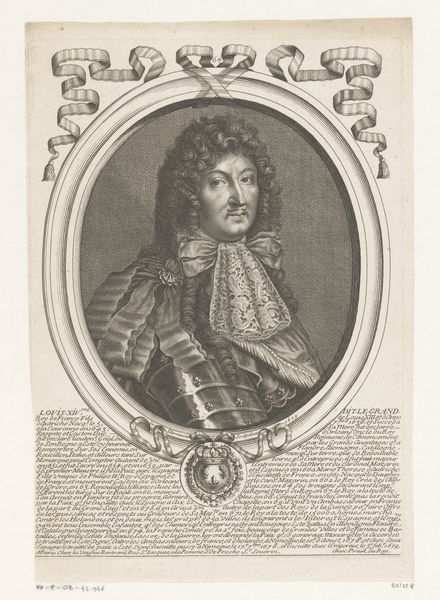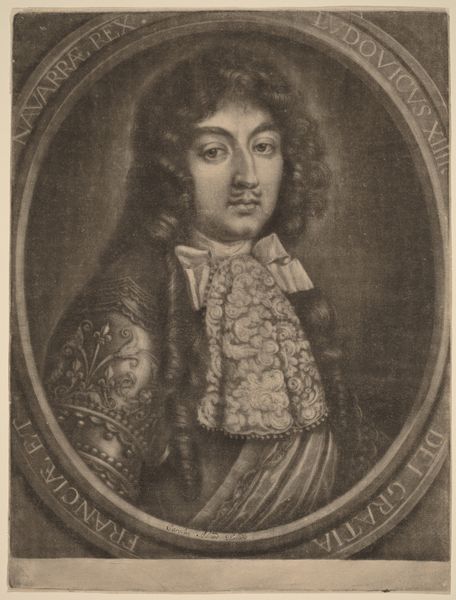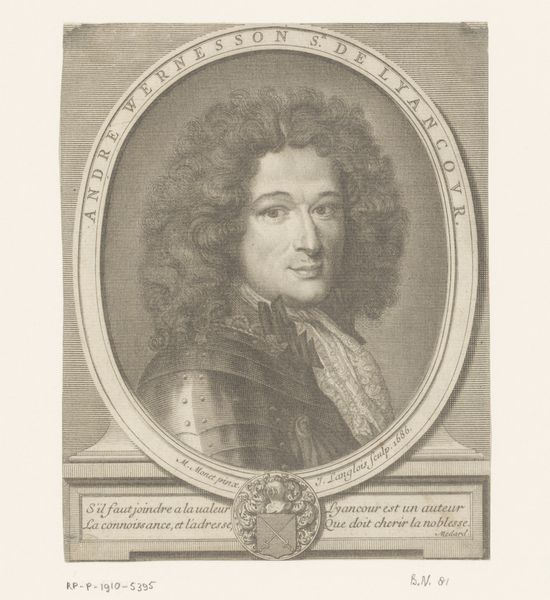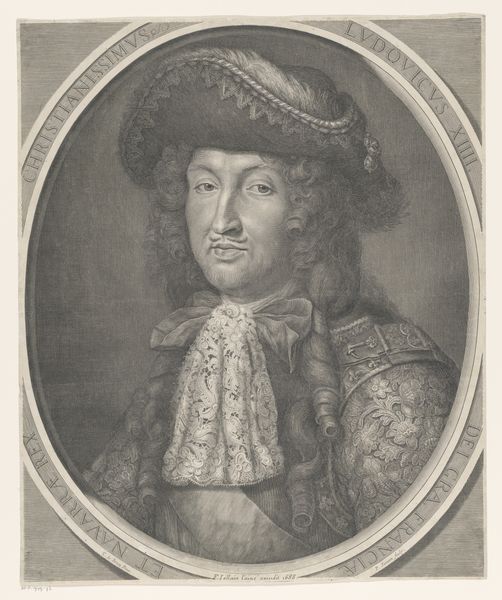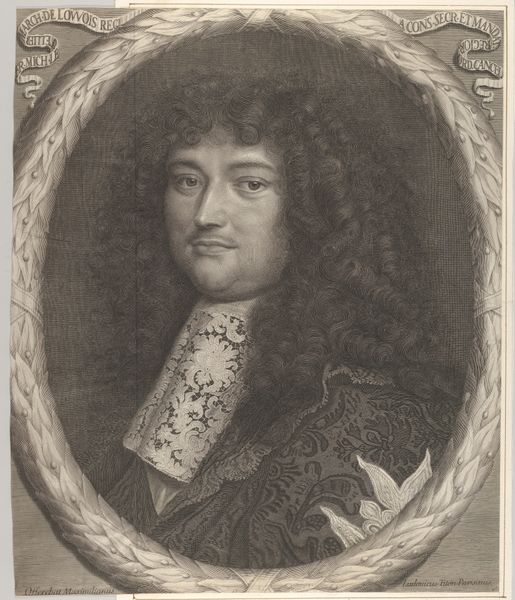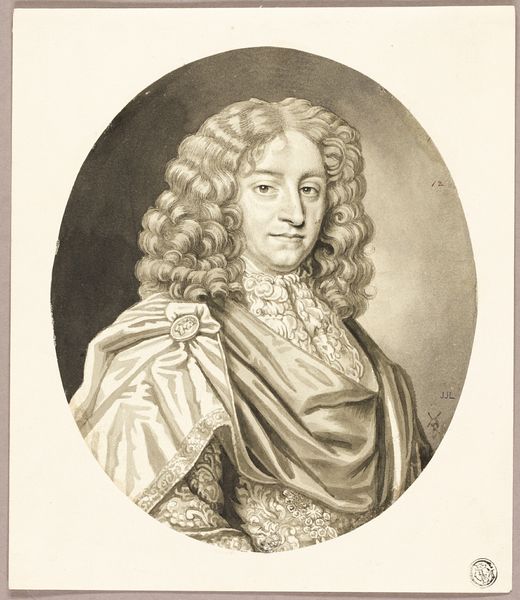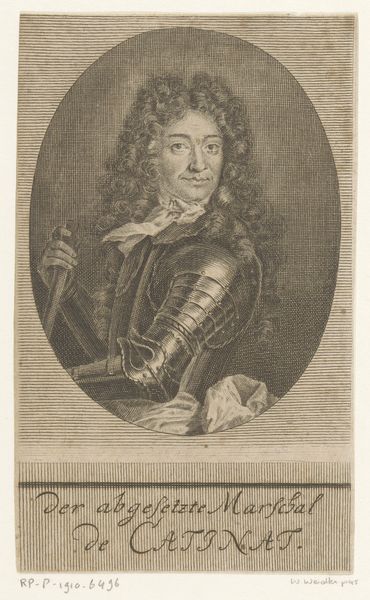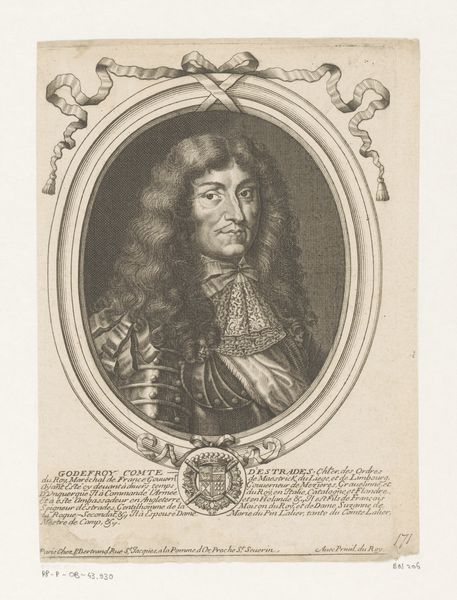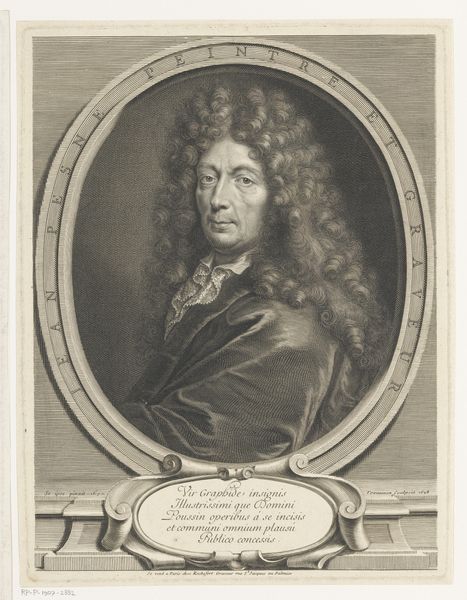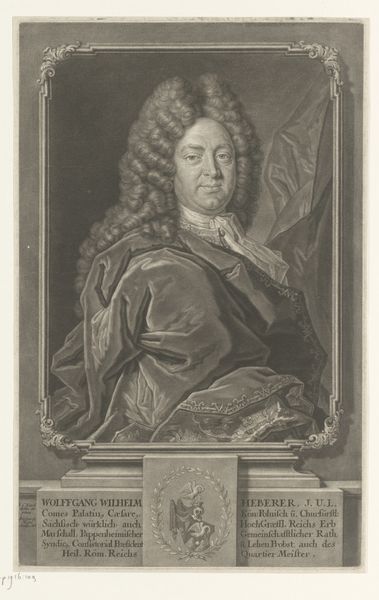
print, engraving
#
portrait
#
baroque
# print
#
history-painting
#
academic-art
#
engraving
#
realism
Dimensions: height 581 mm, width 487 mm
Copyright: Rijks Museum: Open Domain
Editor: This is a print from 1679 by Antoine Masson, titled "Portret van Lodewijk XIV van Frankrijk," so, a portrait of Louis XIV of France. The engraving style gives it a formal and imposing air. What can you tell me about its visual language? Curator: Notice how the oval frame contains and yet, simultaneously, isolates the figure. The textural variation between the smooth skin, elaborate lace collar, and complex, curling wig create a dynamic tension within the composition. Note the contrast, for example, of the density of lines used to describe the armor against the relative flatness of the background. How does this structured use of line inform your understanding? Editor: It's almost like the texture helps create a sense of hierarchy, making some parts pop, right? Curator: Precisely. The formal elements like line and texture create the illusion of depth and importance, thereby glorifying the King. Moreover, the precise and intricate rendering speaks to the values of academic art—order, clarity, and control. Consider the technical skill required to achieve this level of detail through engraving. The line work almost mimics the effect of light on the various surfaces, from the armor to the skin. Editor: So, beyond just being a picture, it's really highlighting the artistry and technique of printmaking itself, isn’t it? A structured display. Curator: Yes, by isolating and examining these formal qualities, we reveal the print's inherent construction as a display object, transcending its subject. I trust you found our exchange today, regarding form and function, worthwhile? Editor: Absolutely. Focusing on these technical choices really opened my eyes to a whole new level of looking at art! Thank you for sharing your expertise.
Comments
No comments
Be the first to comment and join the conversation on the ultimate creative platform.
